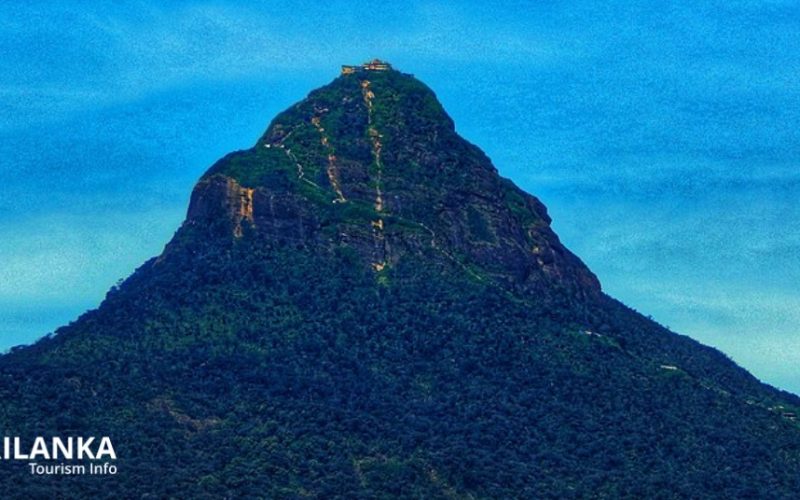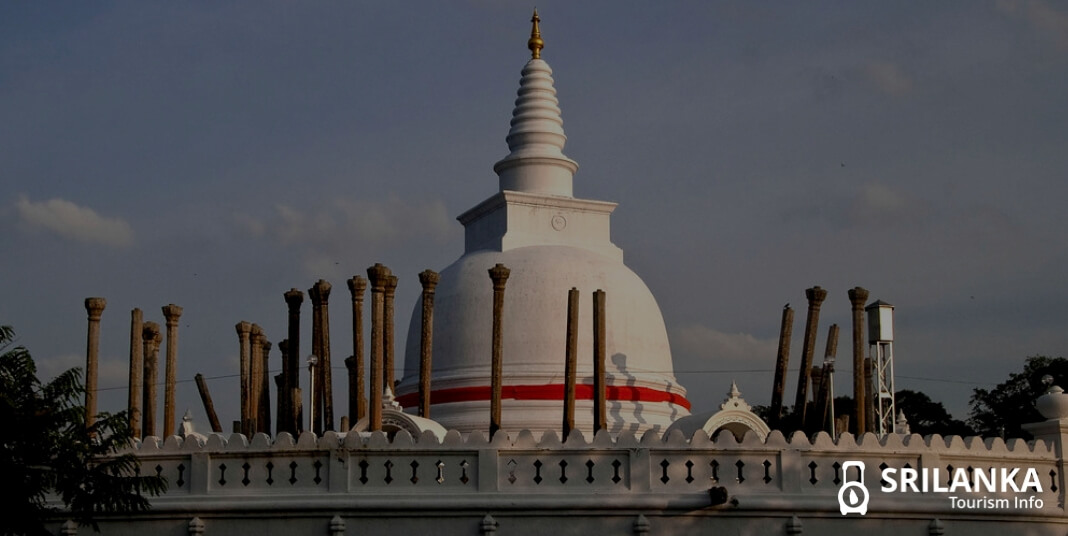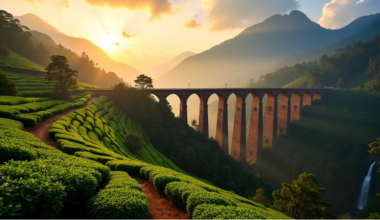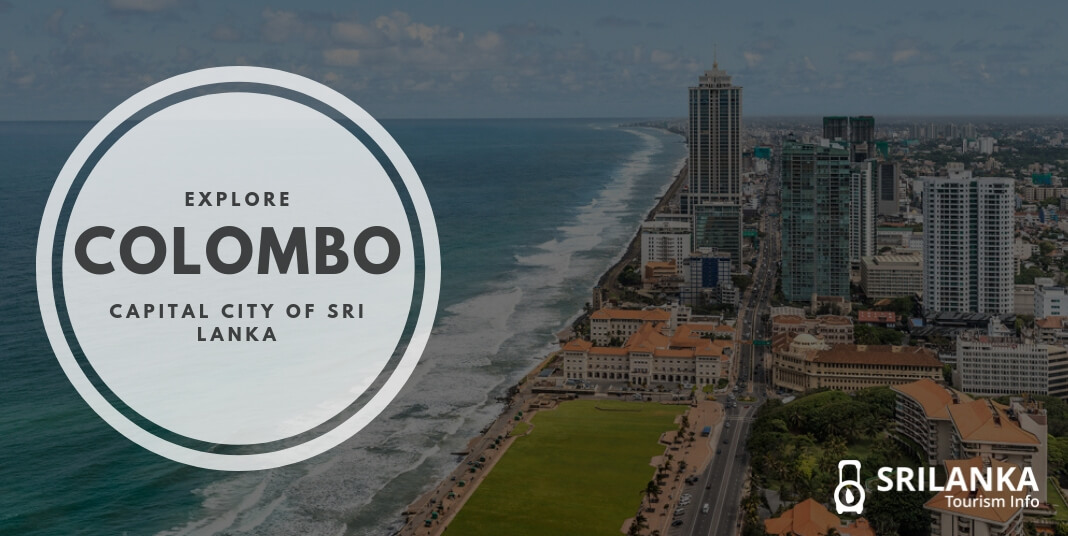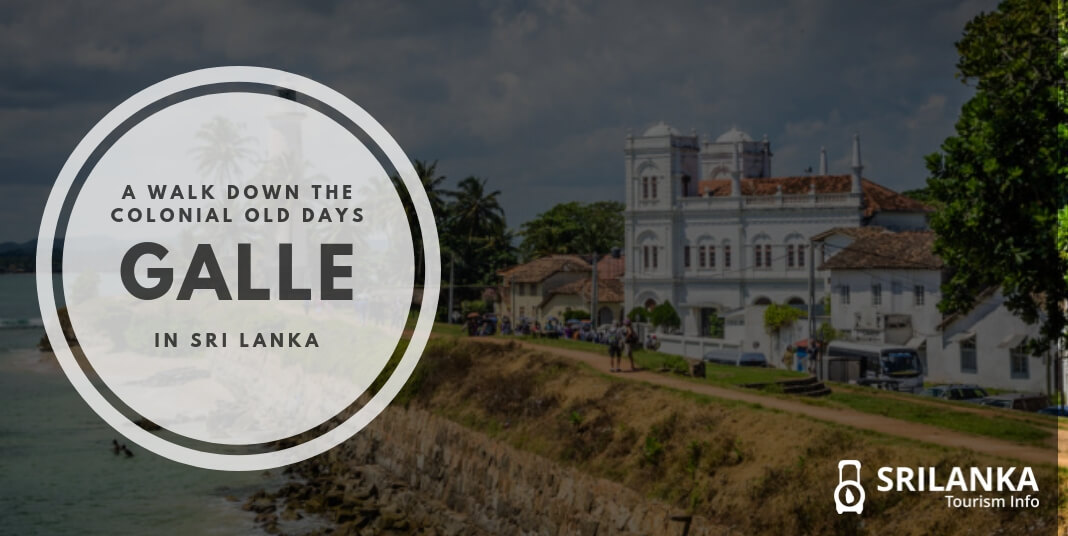Sri Lanka, a country of contrasts and excitement, has, for centuries, made globetrotters fall in love with it in no time.
To the daytrippers and the flashpackers, this small island offers an alluring view of the lush green tea fields and the pristine beaches, to go with wildlife safaris and copious traditions.
Sri Lanka is a tiny island country located in the Indian Ocean; there is an abundance of sites that inevitably take the breath away. The jewel-shaped country is also house to viridescent landscapes and sapid food.
As challenging as it may sound, upon reaching Sri Pada mountain, both locals and tourists are offered a breathtaking view of the sunrise, leaving them spellbound.
So without further ado, here’s our detailed guide on 7,359 ft summit, Sri Pada Mountain.
Sri Pada or commonly referred to as the Adam’s Peak is a 2,243 meters tall mountain, which is a strenuous yet rewarding climb. The top of the mountain bears a resemblance to a large footprint.
Sri Pada History
Found amidst the southwestern regions of Sri Lanka, Adam’s Peak is a 5,000- stair climb spanning over 5 kilometers. The conical-shaped summit had made its first historical presence during the Vijayabahu reign (1065-1119 AD).
Earlier mentioned as Samanthakuta in the Dipavamsa, the 4th century Pali chronicle, Sri Pada was known as a place visited by the Buddha. Rajaveliya, an ancient history, cites that King Valagamba of Anuradhapura had taken refuge in Adam’s Peak against the Indian invaders.
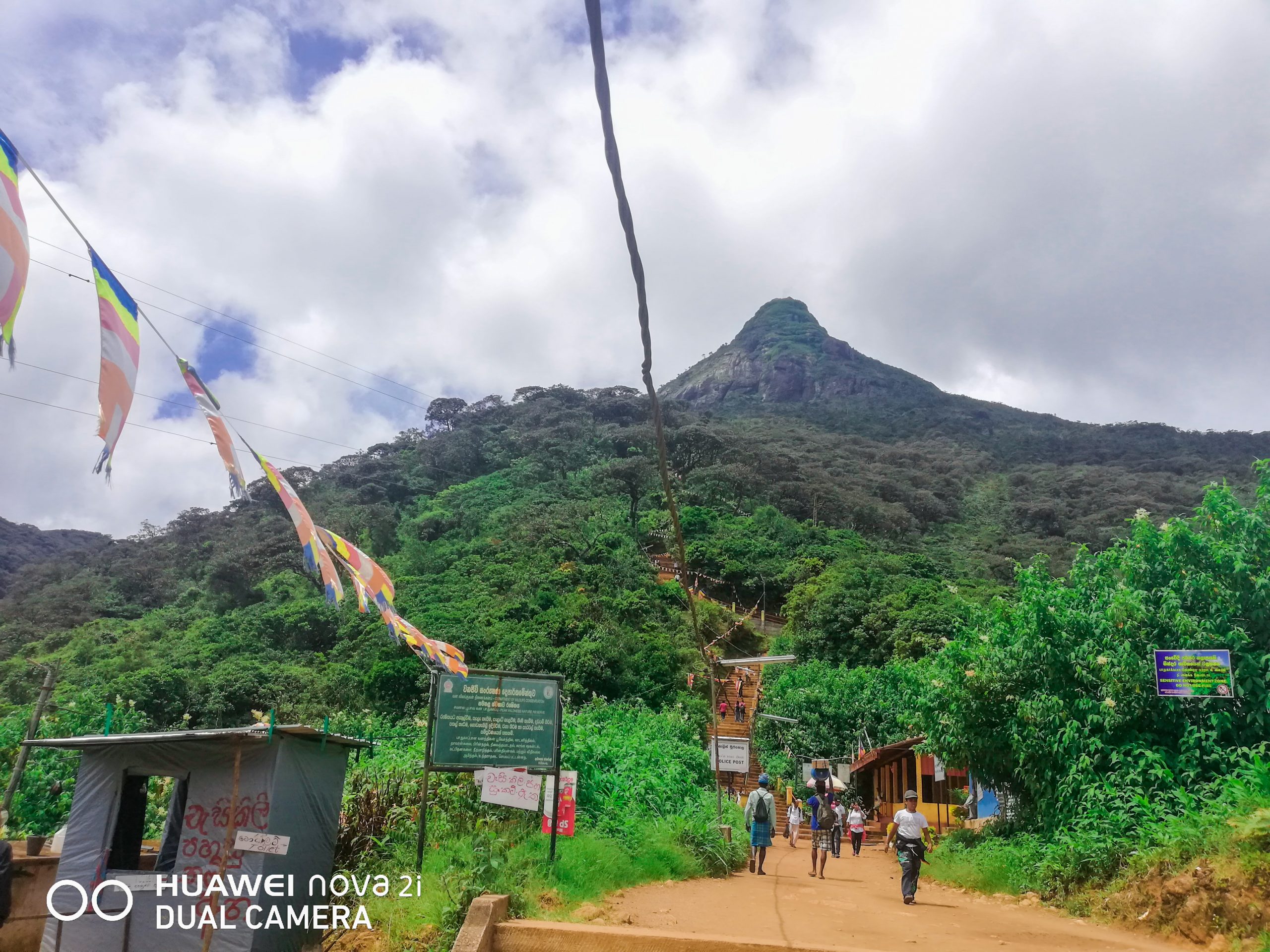
Mahavamsa, an epic poem penned in Pali, highlights the visit of King Vijayabahu of Polonnaruwa (1058 – 1114) to the peak. Also, renowned Chinese pilgrim and Buddhist Traveler, Faxian, paid his visit to Sri Lanka, although it is not very clear about his visit to Adam’s Peak.
Italian explorer and writer Marco Polo, recorded in his book ‘Travels’ about the significance of this historical site; however, Polo did not mention about the footprint in the rock.
In 1344 CE, Ibn Battuta, an Arab traveler, and scholar referred it as Serendib after summiting the Adam’s Peak. Battuta describes the climb by mentioning a stairway and iron stanchions bundled with chains, serving as a support to pilgrims to hoist up the summit.
Furthermore, world-renowned chemist Sir Humphry Davy’s brother, also a chemist, John Davy, traversed the mountain in 1817. Describing the trek, Davy highlighted about observing a gargantuan-sized footprint carved on a stone and adorned with a margin of jewels and gems.
The peak is revered by various religions, including Theravada Buddhists, Muslims, Christians, and Hindus, who consider the footprint of the Buddha, Adam, and Shiva. To reiterate, the chains placed on the peak is believed to have been set by Alexander the Great.
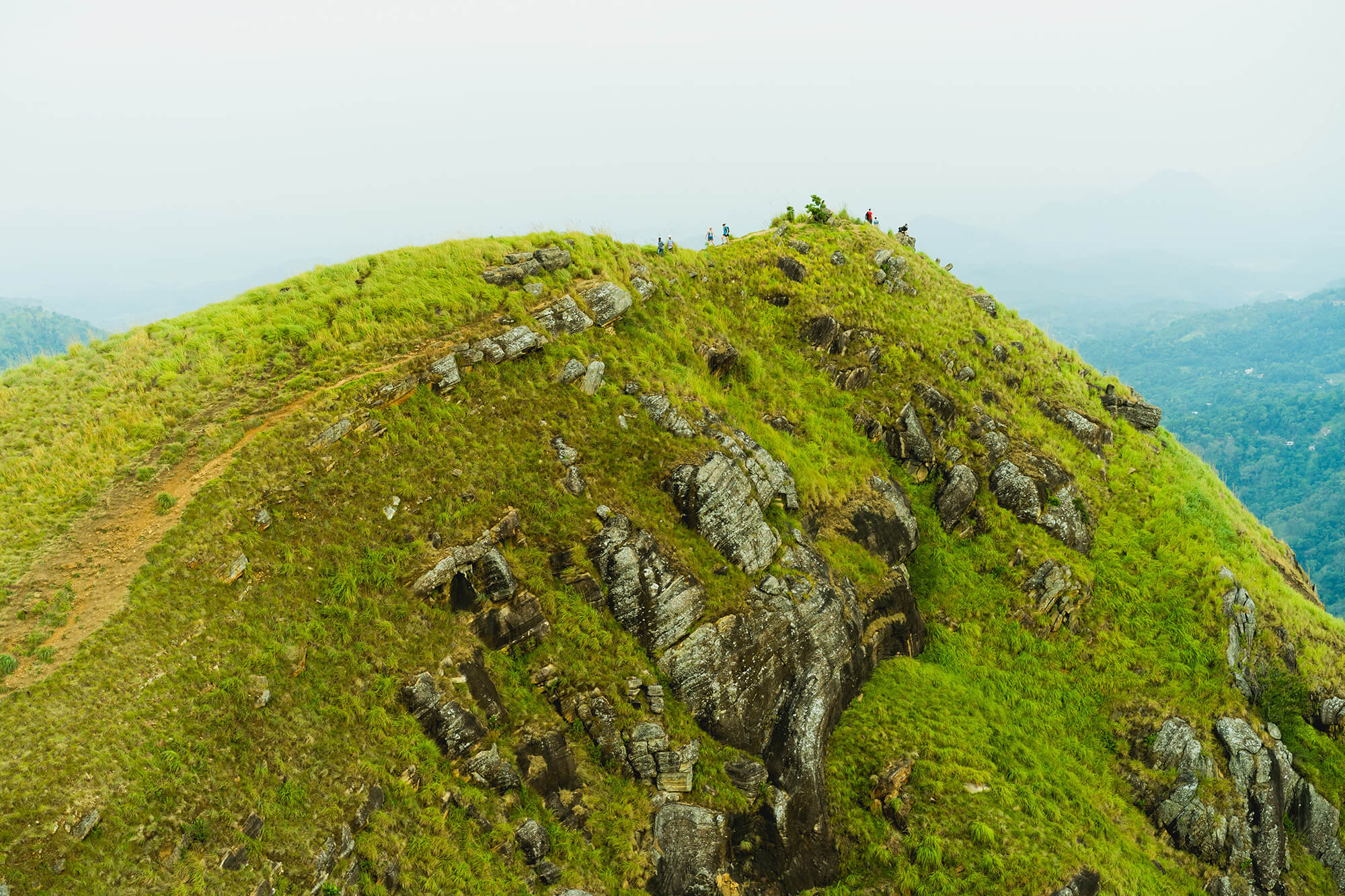
Revered as a holy site, Adam’s Peak welcomes approximately 20,000 pilgrims every year varying widely in age and religious beliefs, which summit the peak to find solace and spiritual significance.
This assemblage of diverse groups have certainly not realized the challenges faced by their ancestors whilst on this arduous journey.
Challenges and Efforts to Preserve
With pilgrims visiting the holy shrine in the majority, there is an insurmountable threat to the land’s resources as they continue to stay in facilities in its foothills. Pilgrims have created menace by hurling plastic bags, wrappers, and other such non-biodegradable trash while on their way, summiting the peak.
Visitors highlight the ambiance at the base of Adam’s Peak to that of a fair. The base houses sufficient space for vendors to sell souvenirs, snacks, and recorded music plays.
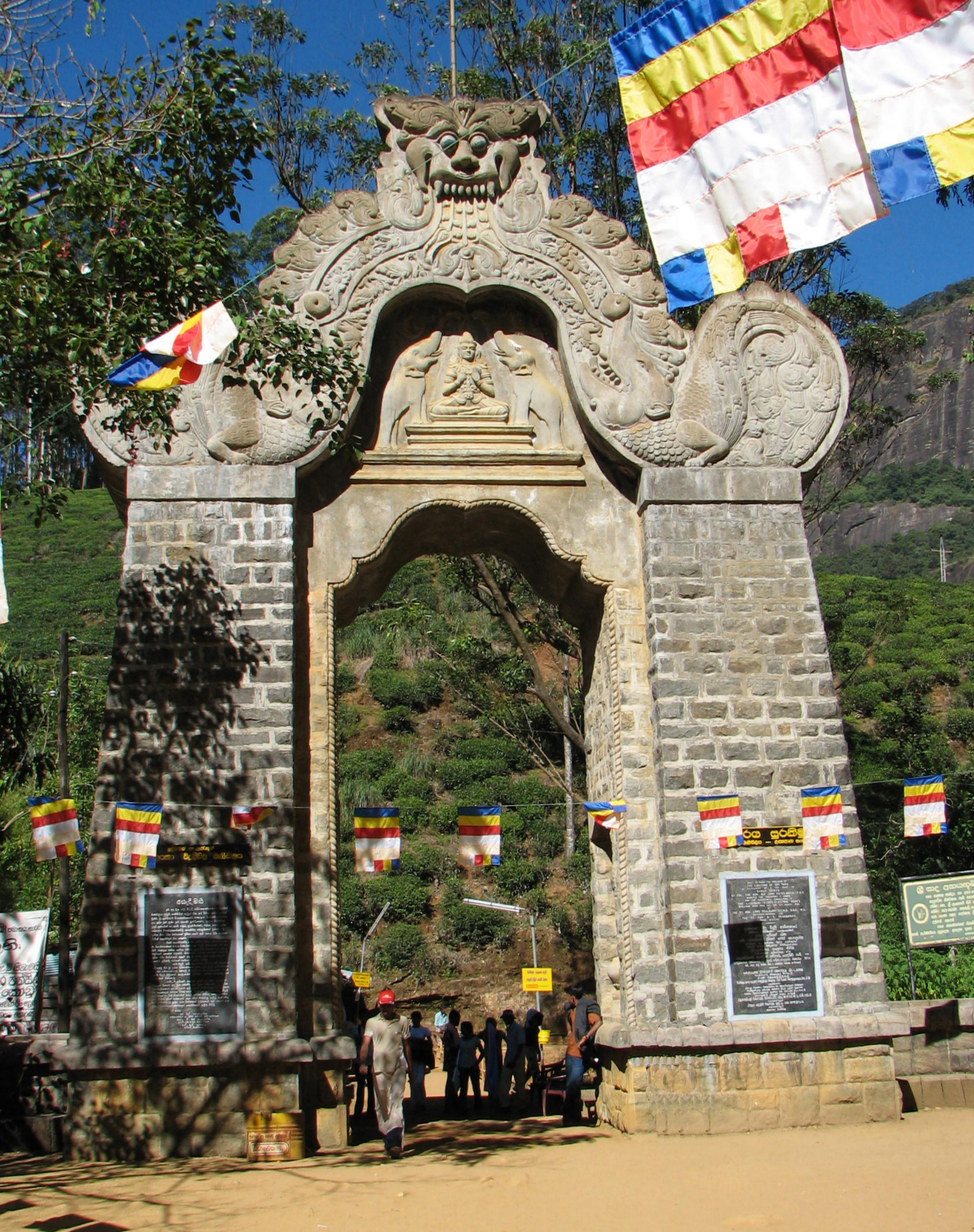
Accommodating pilgrims is jeopardizing the forest around the mountain and few species living inside it. For some time, the area around the peak is witnessing a sudden spike in deforestation, owing to the requirement of firewood. To go even further in time, Sri Lanka’s human settlement had reduced the country’s forest coverage from 80 percent in 1881 to 22 percent in 1996.
An organization called The Upper Watershed Management Project (UWMP) works for the betterment of the river watersheds around the Sri Pada forest.
Back in 1998, several international funds poured in for the project to start eradicating soil erosion and resultant flooding and low crop production. Together with residents, the UWMP plants trees and produces sustainable farming practices.
Working alongside the Department of Wildlife and local government, the UWMP hopes to put an end to the use of plastic bags. Several reports have shown vendors participating, only because of their admiration towards Sri Pada or as their livelihood relies on the mountain.
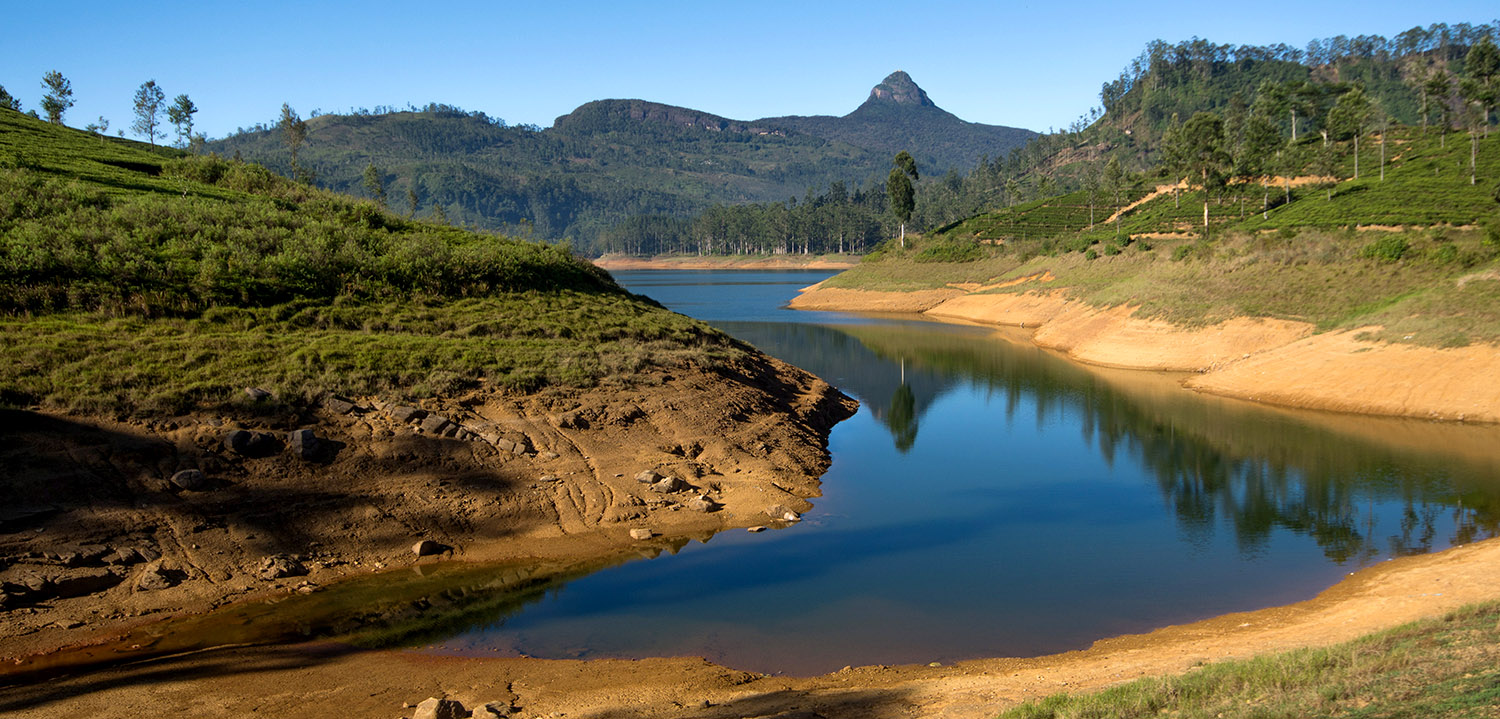
In 2006, the Sri Lankan government added the peak to its tentative list for nominations to the World Heritage Site, under the “Peak Wilderness Sanctuary” category. Professor Anoja Wickramasinghe mentions this as a challenge for the pilgrimage, offering uniformity to religious beliefs, local resource practices, and environmental preservation.
With Sri Lanka’s history annihilated because of ethnic conflicts, this mountain stands as a notion of potent symbol. As this peak, revered by the majority of religions, should be implored to people into working together for a sustainable management program.
Climbing up Adam’s Peak
Now that we’ve visited Sri Pada’s history, here are some valuable tips while on the route to the summit.
The steep path to the top includes 5,000 crumbling stairs that spans over 5 kilometers. Pilgrims prefer to ascend during the day and spend the night camping until the ceremony of the sunrise. Generally, the hike can take about two-four hours to climb and two hours to descend, depending on the trail and the pilgrims’ fitness. Albeit, the trails pose no threat as there are handrails to cling on to.
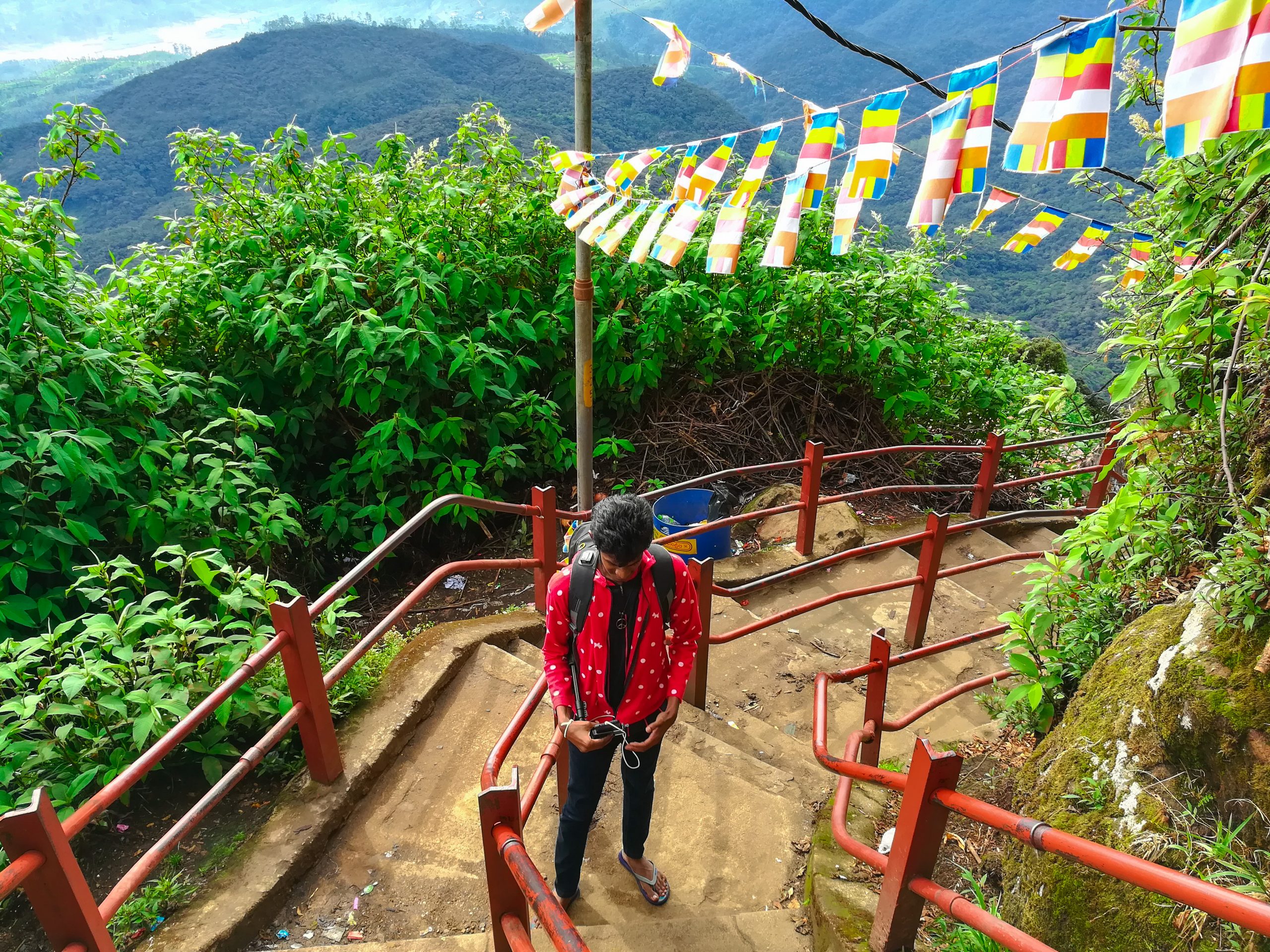
Summiting the peak is easily accessible between January and May. During the off-season (June to October), climbing uphill is a daunting task as the region is dark, misty, and rainy. The trails are usually overcrowded with fancy couples, mostly during the day, another reason to avoid during this season.
Irrespective of the weather, quite a few Sri Lankans venture to the peak several times. Once arriving at the top, pilgrims express their happiness by ringing the temple bell.
As you steadily ascent towards the top, there will be a significant difference in temperature, which is exacerbated by the wind. Although the descent part is more comfortable, it can be strenuous to your leg muscles. Most describe the descending path as “legs felt jelly and calves filled with pain.”
How to get there?
The best accommodation and gateway to Adam’s Peak is the nearby town – Dalhousie. The peak is about 4.3 miles away from the city. You are wondering how to reach the Dalhousie village? Fret now, here’s how you can.
First, reach Hatton by taking a train to Dalhousie; Hatton to Dalhousie is a 20-mile journey. Hatton is reachable via train, bus or tuk-tuk/minivans either from any of the other major cities like Colombo, Kandy, etc.
Any of the routes mentioned above you choose will leave you with awe-inspiring lake views and numerous tea plantations. Commuting is not a challenge, as buses to and fro Dalhousie leave every ten minutes.
Breaking out the reach (from different locations)
Route 1: From Kandy to Sri Pada
The 55-mile journey between Kandy and Adam’s Peak can be covered by taking a train from Kandy to Hutton, and then a bus to Dalhousie. To help you with the train schedule, click here. http://www.railway.gov.lk/
Route 2: From Colombo to Sri Pada
The peak is easily traversed from Colombo via train. Hop on to a train to Hatton, board a bus or minivan to Dalhousie. The Sri Lankan public transport is the best when it comes to trimming down expenses. However, travelers prefer a driver for their tour to the tiny island.
Route 3: Ella to Sri Pada
Ella is home to the miniature version of Adam’s peak named ‘The Little Adam’s Peak.’ The 1141-m tall summit is just 1.2 miles away from the town. The train journey from Ella to Sri Pada will give you a tantalizing glimpse of the city. Usually, the duration of the journey takes about four to five hours, depending upon the weather. Visitors christen this train journey as a highlight of their adventure to Sri Lanka.
Route 4: Hatton to Sri Pada
Now that you’re almost there, here are a few options to consider. The most affordable way out is to take a bus from Hatton to Dalhousie. Also, there are plenty of options around the corner – taxi, tuk-tuk; however, hitchhiking will help you in saving some money.
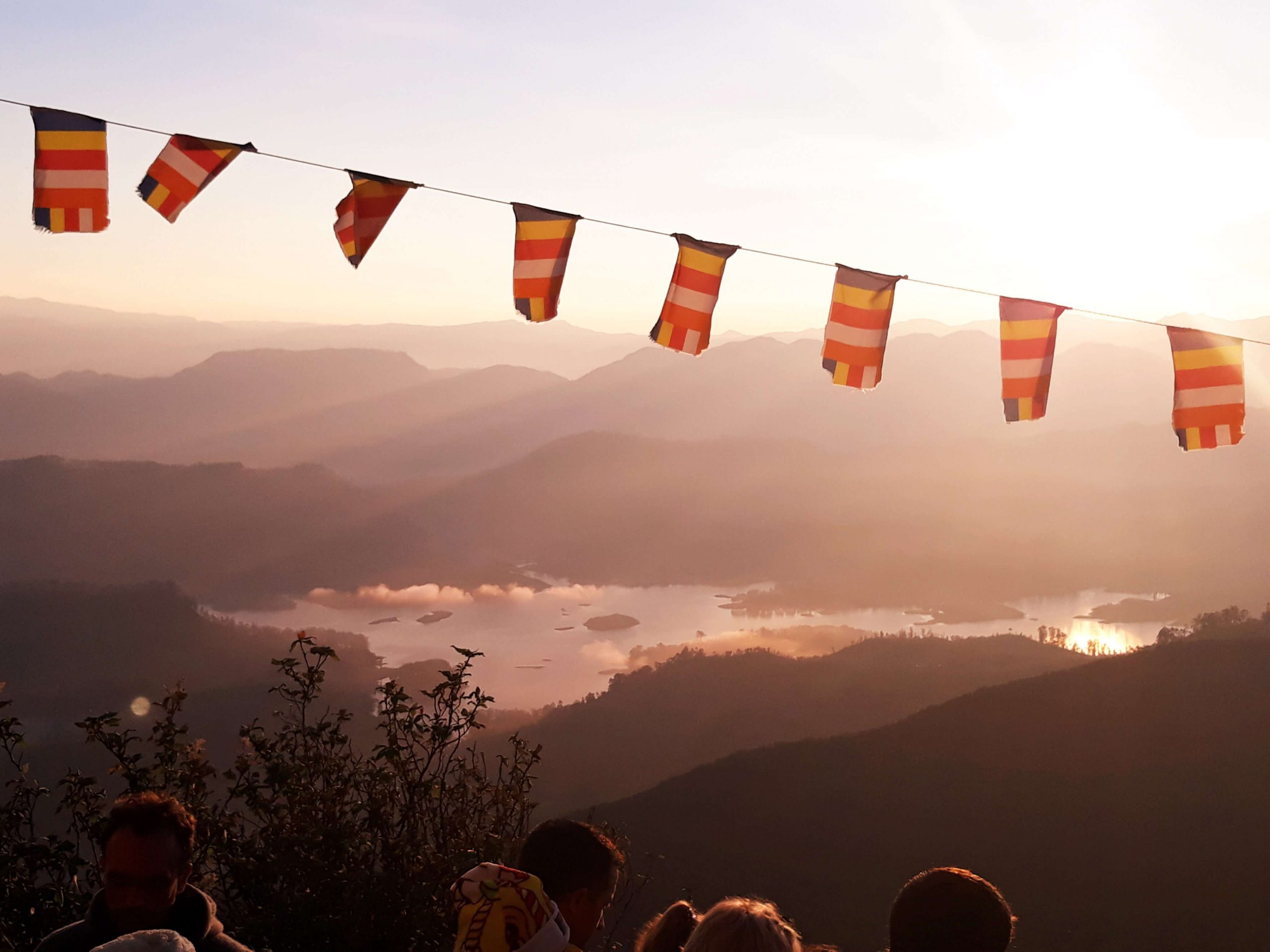
Tips You Need While Trekking Sri Pada
Now that you’ve reached, it is time you carefully pay attention to the following tips:
The Start: To witness an unobstructed sunrise, begin with the trek around 1-2 am, considering the time for short breaks. If you kick-start at midnight, it is mandatory to carry a flashlight.
However, skimming through images online may tell about the stairs lit in the dark, but the path remains to be dark.
Only warm clothes: Summiting the top in the late hours will be icy-cold. Warm clothes are handy as you’d be reaching the top before the sun turns up. Ensure that you carry enough layers to keep yourself warm and cozy.
If you are ascending during the day, you are most likely to sweat, but as the sun sets, you start feeling the chill.
Avoid crowds: Having scaled Adam’s peak, we suggest you avoid the mountain during the Sinhalese New Year, i.e., mid-April or the full moon day (called ‘Poya’ Days).
The view, the sunrise, the climb, how strenuous let it be will only be difficult for a few. However, if you carry the essentials, you are in for an experience of a lifetime. Lastly, peeps with knee, leg muscle pain should carry a trekking pole or a stick.
FAQs
Where to stay while summiting for Sri Pada?
Travelers often rent rooms in Dalhousie, which is the closest town around. But you’ll have plenty of options to choose from – guesthouses and restaurants.
How long can I stay in Dalhousie when hiking for Adam’s Peak?
Before climbing the peak early in the morning, you must able to arrive an evening before. As the sun starts to rise, you get to see blankets of clouds and the entire town. Visitors traveling frequently recommend a night stay in Dalhousie and then advance to their next destination.
Sources:
- https://www.lonelyplanet.com/sri-lanka/the-hill-country/adams-peak-sri-pada
- https://www.theyoganomads.com/guide-to-climbing-adams-peak-sri-pada-in-sri-lanka/
- https://sacredland.org/sri-pada-sri-lanka/

